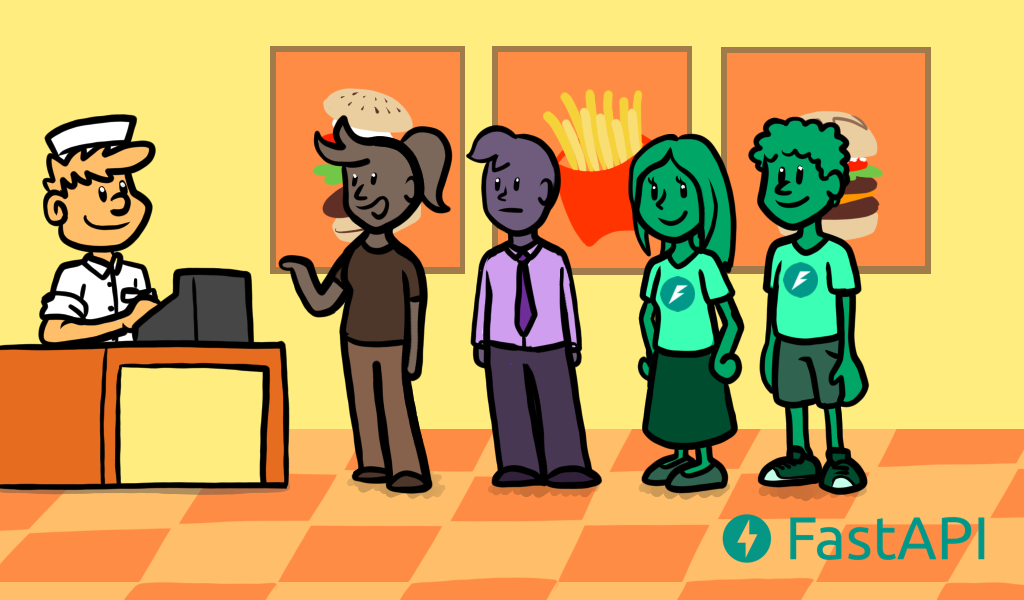Using async for concurrent work
Introduction to FastAPI

Matt Eckerle
Software and Data Engineering Leader
Why use async? Concurrent Burgers!
Sequential Burgers

Concurrent Burgers

1 https://fastapi.tiangolo.com/async/
async in practice
Sequential Burgers
Defining a function to get burgers
# This is not asynchronous
def get_sequential_burgers(number: int):
# Do some sequential stuff
return burgers
Calling the function sequentially
burgers = get_burgers(2)
Concurrent Burgers
Defining a function to get burgers
async def get_burgers(number: int):
# Do some asynchronous stuff
return burgers
Calling the function asynchronously
burgers = await get_burgers(2)
FastAPI with async
If we can:
results = await some_library()
Then use async def:
@app.get('/')
async def read_results():
results = await some_library()
return results
Note Only use
awaitinside of functions created withasync def
When to use async
Use async
If our application needs to wait for other systems to respond
- External API
- Database
Examples
- HTTP requests
- Querying databases
- Reading files
Don't use async
CPU-heavy tasks
Examples
- Audio or image processing
- Computer vision
- Machine Learning
- Deep Learning
If we aren't sure
Let's practice!
Introduction to FastAPI

